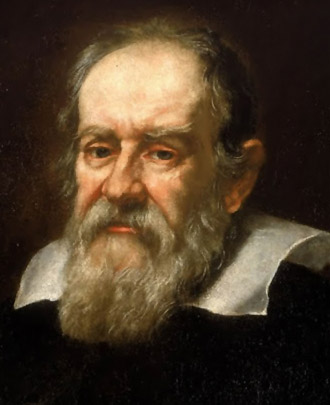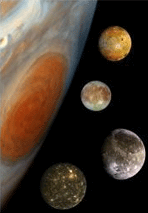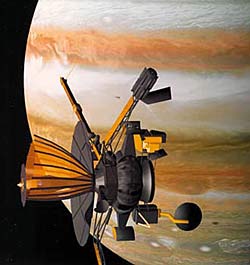“The Bible shows the way to go to heaven, not the way the heavens go”
 |
| Galileo Galilei Justus Sustermans / Public domain via Wikimedia |
Galileo Galilei, born February 15, 1564, was one of the most important figures in the Scientific Revolution. He lived in Italy in a period when religious leaders were also powerful political leaders who could enforce the teachings of the church with imprisonment, torture or death by the Inquisition. Despite this culture, Galileo studied Mathematics and Philosophy and became a brilliant creative thinker. He discovered several basic laws of motion and studied the night sky. Galileo read “On the Revolutions of the Heavenly Spheres” by Nicolaus Copernicus, in which Copernicus proposed that the Earth was not stationary with the Sun, planets, and stars orbiting it, as everyone believed, but that Earth actually rotated and orbited around the Sun. Galileo saw merit in this theory despite that fact the Church did not.
 |
| Galileo's telescope Fahie, J. J. (John Joseph) / Public domain via Flickr |
In early 1609, Galileo heard that a Dutch eyeglass maker had put a convex lens and a concave lens, each of just the right strength, together and created a device that could magnify things. Galileo immediately imagined the potential of such a device and set about to improve it. He learned to grind lenses and used his knowledge of optics to create the first telescope. The telescope allowed him to see objects in the night sky with a whole new level of clarity. He made very detailed drawings of the craters, mountains, and other imperfections of the moon. In 1610 he observed four very small points of light in a perfect line near Jupiter and viewed them several nights and discovered that they were moons of Jupiter. The fact that the moons orbit Jupiter and not the Earth convinced him that Copernicus’s heliocentric theory was right; now he needed an experiment to prove it. Galileo’s protégé, Benedetto Castelli suggested that if all of the planets, including Venus, circled the Sun, then Venus should sometimes appear to have a crescent shape or sometimes not, similar to the phases of the moon. Upon examination with his telescope, Galileo confirmed that Venus had phases, and therefore confirmed that it orbited the Sun.
 |
| Jupiter's moons NASA/JPL/DLR / Public domain |
In 1616 the church warned Galileo not to publish any more papers in support of the heliocentric theory because it was contrary to a literal interpretation of several passages in the Bible. Galileo agreed to this, however, he finally stood up for what he knew to be the truth. He tried to convince important leaders, including the Pope himself, that the Bible was a book explaining the path to salvation, not an astronomy text, and that the evidence for the heliocentric system was too solid to deny it. Galileo was given permission by the Pope, one of Galileo's biggest supporters, to publish his findings, as long as the heliocentric theory was only portrayed as an unconfirmed hypothesis and that the Church’s traditional views were also to be expressed, as well as the Pope's own views. In 1630 Galileo finished “A Dialogue Concerning Two Chief World Systems” which structurally followed the Pope’s instructions. Unfortunately, it was found to have a strong bias in favor of heliocentricity and the invented character arguing for the church’s Earth-centered model of the universe, Simplicius, was a simpleton. Also, unfortunately, the views of Pope Urban VIII were inserted into this uncomplimentary spokesman. The Roman Inquisition tried Galileo for heresy, forced him to denounce the heliocentric theory, and sentenced him to house arrest for the rest of his life. Despite this, Galileo continued to write about mathematics and the physics that would, after his death, influence Sir Isaac Newton and even Albert Einstein.
In addition to being a great scientist, Galileo was also a model for the ethical value of citizenship. Sometimes being a good citizen means following the dictates of authority, but sometimes it means standing up for what is right, even if the people in power disagree with you. Galileo’s fight for the truth and for valuing reason and logic led to him being a pioneer of the "experimental scientific method" and eventually helped us to have a better understanding of the universe we live in.
Page created on 4/21/2014 10:02:52 PM
Last edited 8/24/2020 9:40:22 PM
The name of this great scientist lives on. In 1995 an important NASA research mission was named after Galileo. "The Galileo Mission" involved two spacecraft: an orbiter and an atmospheric probe that were kicked out of Earth's orbit by an inertial upper stage (IUS) rocket, sending them careening through the inner solar system. The trajectory which the spacecraft followed was called a VEEGA (Venus-Earth-Earth Gravity Assist), traveling first in toward the Sun for a gravity assist from Venus before encountering the Earth two times (spaced two years apart). These encounters with Venus and the Earth allowed Galileo to gain enough velocity to get out to Jupiter.

During the flybys of Venus and the Earth, Galileo's scientists took the opportunity to study these two planets as well as the Moon, making some unprecedented observations. In addition, following each Earth flyby, Galileo made excursions as far out in the solar system as the asteroid belt, enabling scientists to make the first close-up studies of two asteroids, Gaspra and Ida. The Galileo mission scientists were fortunate to be the only ones with a direct view of the Comet Shoemaker-Levy 9 fragment impacting on Jupiter.
